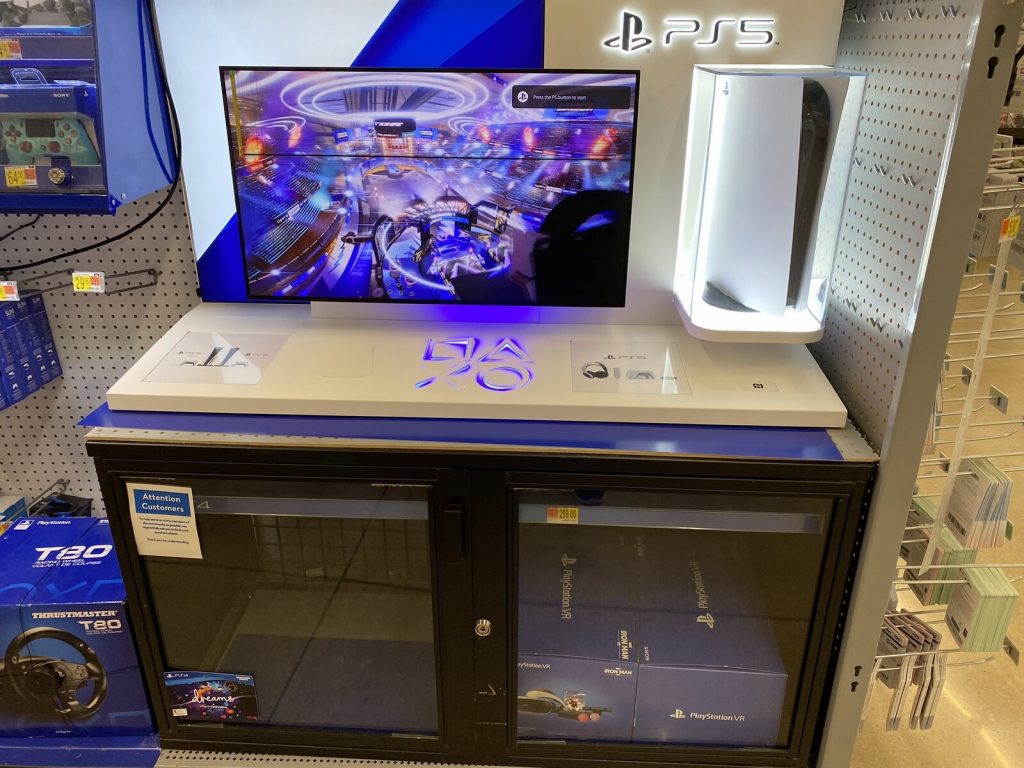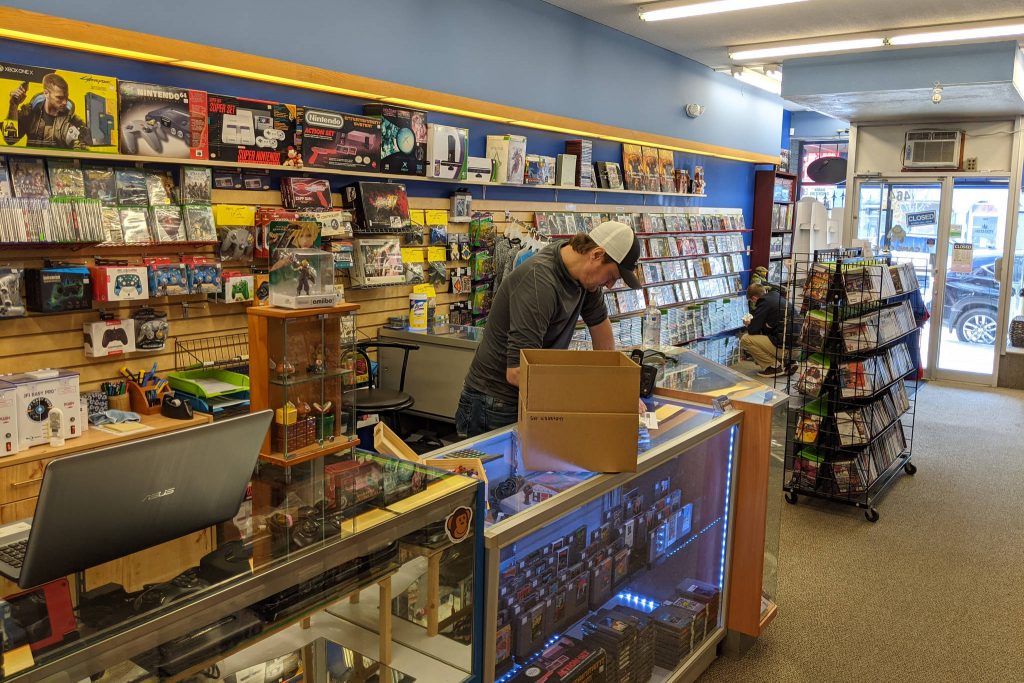Grab your controller, strap in and press start: we’re diving into the thrilling world of video game retail psychology.
As any true gamer knows, a video game store is more than a place to pick up the latest copy of your favourite franchise—it’s a battlefield, an adventure, a paradise. Ever wondered why it feels so enticing? We’re peeling back the curtain on the strategic design of these retail wonderlands and unveiling the tricks that keep you exploring aisle after aisle.
The strategic setup of shelves
“Adventure is just around the corner”—that’s the mantra of any well-designed video game retail store. Strategically arranged shelves guide you through a carefully constructed narrative, starting from the moment you walk through the door. The latest and greatest games, consoles, and merchandise are strategically placed at eye level and near the entrance, where they’re sure to catch your attention.
But there’s an art to the organisation, much like the way a skilled game designer sets up levels. As you delve deeper into the store, you’ll discover a mix of classic hits, rare finds, and indie gems. These rewards for exploration are key to encouraging customers to explore every nook and cranny.

Lighting: Illuminating the path to purchase
Often overlooked but critically important, lighting plays a pivotal role in influencing a shopper’s mood and behaviour. Bright lights enhance the visual appeal of the products, making colours pop and covers shine. Spotlighting can draw attention to new releases or special offers, while softer, ambient lighting in demo areas creates a comfortable environment for test plays. Cleverly designed lighting guides you subtly, highlighting the path through the store’s gaming narrative.
The soundtrack of your shopping adventure
Ever noticed the background music in a video game retail store? It’s rarely an arbitrary playlist. Store designers carefully select tracks from popular games, evoking nostalgia and reminding you of the epic moments from your gaming history. This tactic, known as sound branding, not only enhances the store’s atmosphere but also reinforces your emotional connection with gaming, driving you further into the narrative of the shopping experience.
The power of demo machines
Imagine stepping into a store and hearing the crisp sound of virtual gunfire or the thrilling orchestral score of a fantasy RPG. Demo machines aren’t just an opportunity to try before you buy—they’re part of the immersive atmosphere of the store.
These machines draw you in, offering a taste of different worlds. They invite you to sit down, relax, and experience the latest games, acting as a lure to pique your interest in a game you may not have considered. It’s a psychological gambit, trading a few minutes of gameplay for increased customer engagement.

Flooring that sets the mood
Ever wondered what’s beneath your feet as you traverse your favourite gaming store? More than likely, you’ve been walking on resin flooring, a hard-wearing, visually versatile surface that’s perfect for high-traffic areas like game stores.
Not only does it offer practical benefits, like being easy to clean and maintain, but it also plays a crucial role in the psychology of the store’s design. Different colours and patterns can elicit various emotional responses from shoppers—cool blues for a calming atmosphere, and bright reds for excitement.
In a video game store, the floor can be a canvas, subtly adding to the overall gaming aesthetic.
Events and Tournaments: A retail outlet’s social glue
One of the most potent tools in the video game retail store’s arsenal: events and tournaments. Whether it’s midnight releases, developer signings, or epic gaming tournaments, these events turn a store into a community hub, providing social and competitive aspects that engage gamers beyond the retail experience.
Think about it. You’re not just a customer—you’re a participant, a competitor. There’s a thrill in competing, in meeting others who share your interests, in being part of something larger. It’s another layer of the game, another reason to keep coming back.
The checkout: The final level
Last, but by no means least, we come to the final stage in our shopping quest—the checkout. Often near the entrance, it reminds you of the real-world transaction involved in retail but also offers one last chance to make impromptu additions to your loot—be it an extra game, a console accessory, or those irresistible themed keychains. Strategically placed, impulse-friendly items at the point of sale turn waiting time into shopping time, making the most of every moment you spend in the store.

From the second you step into the video game store to the moment you make a purchase, every element you encounter is part of a carefully designed experience crafted to enhance your enjoyment and engagement. Shelves, demo machines, resin floors, events, tournaments, lighting, checkout strategies, and even background music—each plays a crucial role in this real-life game of retail design.
So, next time you visit your local gaming store, take a moment to appreciate the craft and psychology put in by the retail design agencies like design agency Leicester that’s gone into making your shopping journey an adventure. It’s a game within a game—where the final prize is a memorable and enjoyable shopping experience.
Game on, shoppers!
For more features like this, just click right here.